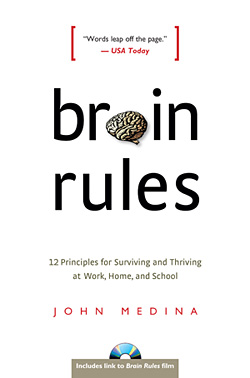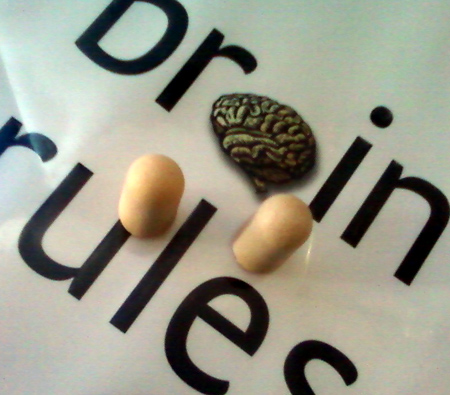
Learning and memory can be essential in self-motivation. Why? Well, consider two examples.
Let’s say a man, Scott, has trouble with being late, and he’s trying to change his habits to always be on time or a little early. Scott has three children, all in school, with various afterschool activities. Sometimes they take the bus home, but sometimes Scott needs to pick them up, while sometimes his wife, Selena, does. Sometimes activities get changed at the last minute.
So Scott might get much better at paying attention to what he’s doing before leaving to go somewhere, and he might start setting aside extra travel time in case of delays, but if his daughter shouts “We have an extra soccer practice tonight, so you have to pick me up” as she’s leaving for school in the morning and Scott doesn’t remember this fact, then his other preparations are useless, and his daughter will be left standing in front of a deserted, locked school until someone catches Scott’s mistake.
To take a different kind of example: let’s say Lisa wants to become much more organized at her job (she’s an architect). She attends a special training seminar on organization for architects, with all kinds of wonderful information–but she’s distracted during the seminar by a very sick man sitting next to her, and so while she scribbles down a lot of notes, the information doesn’t sink in. When she looks back later, her notes aren’t of much help: she wasn’t really understanding the material when she wrote it down, so she’s not going to suddenly understand it from looking at her own notes later. She has a vague recollection that the system seemed to be exactly what she needed and involved a lot of colored folders, but that’s it. The system never gets implemented and Lisa continues to spend hours every week trying to find documents she needs.
So if learning and memory are important to self-motivation, how do we improve them? There are a few important facts to keep in mind.
Make sure you understand as you’re learning
We don’t remember things like a video recorder: our brain breaks up everything see, hear, touch, etc. into a lot of separate kinds of information and store it all over the brain, bringing it together as needed. That means that if you don’t learn something when it’s presented to you, you usually won’t be able to learn it by trying to recall the details. Effective learning requires focus at the time you’re learning.
We learn better when information has meaning
The more meaning and connections information has for us, the easier it is to remember. As an example, many top chess players can look at a chess board mid-game and instantly memorize the location of every single piece on the board. In one study, chess players with this ability were able to remember layouts set up from actual games beautifully, but were much poorer at being able to remember layouts where pieces were just set randomly around the board. The actual game layouts were meaningful to them: a possible threat to the queen here, mutually protective knights there, and so on. Random game layouts didn’t have these meanings, so they couldn’t “chunk” the information (that is, bind up many pieces of information into a single “chunk” that can be recalled as one piece), which was what was enabling them to memorize so much information so well (I’m trying to help both myself and my readers chunk concepts from posts when I use subheadings, like in this article). More meaning connections to a piece of information also gives you more possible ways to remember it when you need to.
Emotion is a powerful force in memory
We learn things better when we have emotional associations with them. Have you ever used your own personal information, or a family member’s, when making up a password? Those kinds of passwords are much easier to remember than random passwords, because our lives and those of family members have much more meaning to us than random information. (Unfortunately, such passwords are also usually easier for other people to guess.) In the same way, experiences that are powerfully joyful or frightening or that are emotionally charged in some other way tend to be very memorable. If you run out of your house while it’s on fire, you’re liable to remember that in much greater detail than if you run out of the house to get to the hardware store before it closes. (Although this is also because we tend to remember unusual things better than everyday things.)
To really learn something, start using it immediately
When learning how to do something, one of the strongest possible ways to fix it in memory is to start using it. This serves several purposes: it provides a lot more neural connections for the information; it allows you to experiment and apply the information while it’s still fresh in your memory; and it helps turn up any misunderstandings or gaps in knowledge that need to be filled in while you’re still close to the source of the original information.
One way to start using knowledge immediately is to write, talk, or teach about it. If you find out something you think will be especially useful in your life, you might consider calling up a friend and telling them about what you’ve learned, or blogging or writing a journal entry about it. This forces you to use the information in a way that creates more connections and helps you see exactly how well you’ve understood it, at the same time that you’re doing other people a service by passing it on.
Come back to the same information several times to fix it in memory
Getting information to permanently take up residence in long-term memory usually requires revisiting it several times, with perhaps a few hours to a few days between repetitions. If you make notes about something you want to learn, you can leave yourself two reminders to come back to it two more times, just to review. You can also use the write, talk, or teach approaches at timed intervals. The same amount of study spread over a day or a few days or a week seems to be much more effective than taken all at once.
How this all works in real life
So for instance, if you were writing an article on how memory applies to willpower, you might start out with some examples that people could easily envision, to give meaning to the idea that memory applies to self-motivation. You might even make those examples a little emotionally loaded, with a stranded child here, anxiety about a sick person there … actually, that sounds like it might work. Remind me to write something like that sometime!
And if you want to make the best possible use of this article, you might glance over it to make sure you understand everything, asking yourself questions about each of the major points and seeing how well you can answer them. You might then go blog about it, tell a friend about it, try to summarize the main points in a quick written outline, or go use this information to learn something else. Reviewing it twice over the next couple of days would give it the strongest chance of sticking around.
For more information on how memory works, along with other useful information about how the brain operates, I highly recommend John Medina’s book Brain Rules, which provided some of the information for this entry.
Photo by clappstar.
Like this:
Like Loading...
 There’s a recent post on the Psychology Today site entitled “The Science of Rick Perry’s Brain Freeze,” in which psychologist Ira E. Hyman attempts to explain how a governor of Texas and presidential candidate could have had trouble remembering the Department of Energy, obvious jokes aside.
There’s a recent post on the Psychology Today site entitled “The Science of Rick Perry’s Brain Freeze,” in which psychologist Ira E. Hyman attempts to explain how a governor of Texas and presidential candidate could have had trouble remembering the Department of Energy, obvious jokes aside.









